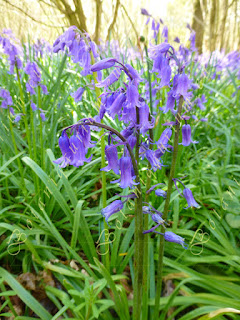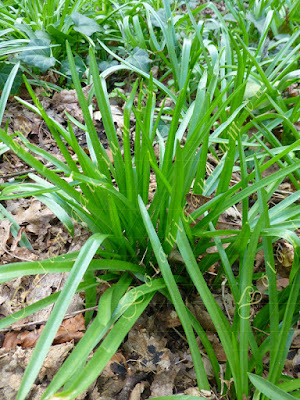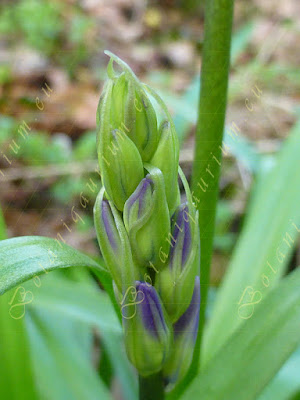Hyacinthoides non-scripta
Asparagaceae
EN: English Bluebell, D: Hasenglocke, FR: Jacinthe des Bois, ESP: Jacinto de los Bosques, ZH: -
EN: English Bluebell, D: Hasenglocke, FR: Jacinthe des Bois, ESP: Jacinto de los Bosques, ZH: -
Description:
A bulb with linear, fleshy green leaves, emerging in early spring, followed by flowers in spring around April/May, one flower stalk per bulb, bending downwards bearing 4-16 bell-shaped, nodding flowers, which are strongly scented, dark blue or lilac-blue, on rare occasions flowers are pale pink or white, each bell-shaped flower has the free lobes curling up at the tips, anthers are cream-coloured. The flowers are very rich in nectar and provide valuable food for bees and butterflies. Important difference to Spanish Bluebells: Flowers along one side of the stalk only! Also tends to be of a darker blue than the Spanish Bluebell. Sets seed in summer with the foliage dying down. Will go dormant until the following spring.
Young foliage
Its growing locations in the wild is an indication for undisturbed, ancient woodlands, making this plant an environmental indicator. In the UK, Hyacinthoides non-scripta is protected by the Wildlife and Countryside Act (1981) which prohibits landowners from removing English Bluebells from their land for sale, and prohibits anyone from digging up bulbs from the countryside. Its listing on Schedule 8 of the Act in 1998 made trade in wild bluebell bulbs or seeds an offence (unless special licenses are issued by the UK Government or devolved administrations permitting sustainable collection of seeds). Current threats to bluebells include the loss of ancient woodland habitat, the illegal collection of bulbs and cross-breeding with non-native bluebells.
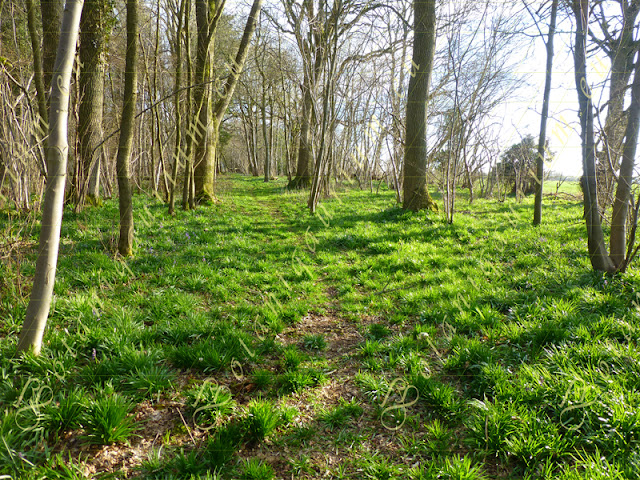 |
| A thick carpet of bluebells in its typical habitat in England, deciduous woodland. |
Height: up to 0,5m (1.5ft)
Maintenance:
No maintenance required. If used as ornamental plants within borders, deadheading and removing of yellow foliage might be recommended.
Emerging flower bud.
Propagation:
Ideal planting time of mature bulbs is autumn. Naturalises well, can be divided from June onwards although dislikes root disturbance. Best propagated via seeds. Collect seeds as soon as ripe and sow immediately onto designated area or in a tray in a cold frame, keep shaded and do not allow to dry out.
Meaning of plant name:
HYACINTHOIDES: (greek) Hyacinth-like
NON-SCRIPTA: unmarked
Origin: Europe, grows wild in Great Britain, Ireland, Belgium, Netherlands and France.
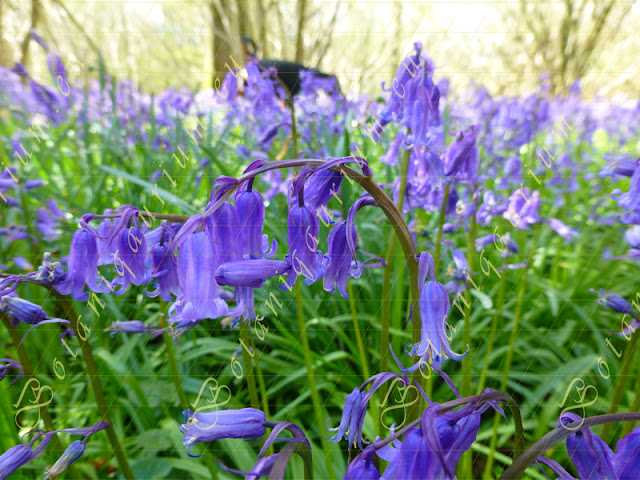 |
| Hyacinthoides non-scripta has the flowers only along one side. |
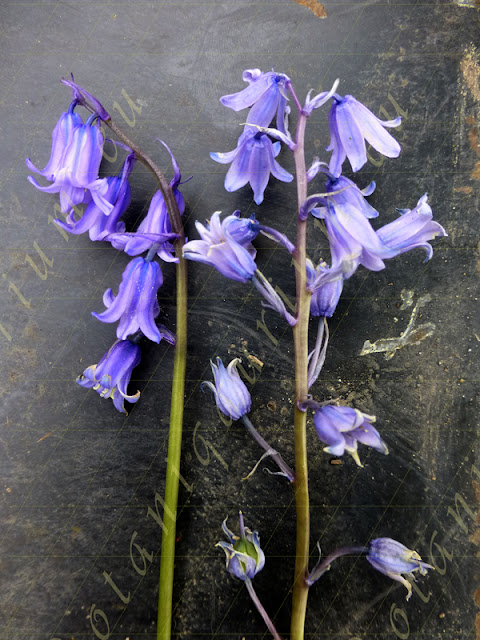 |
| Direct comparison - left: English Bluebell - right: Spanish Bluebell |
Growing conditions:
Grows naturally mostly in woodlands and hedgerows, also shady banks or even on coastal cliffs. On most soils, alkaline to acid, chalk, loam, sand and on clay if well-drained, thrives in partial shade to shade, tolerates sunny sites if moist and cool, dislikes waterlogged conditions, best grown in deciduous woodland or similar habitats,
Hardiness: H5 - Hardy in most places throughout the UK even in severe winters (-15 to -10°C)
Pests and Diseases:
Usually no problems. Rarely slugs have a bite.
Other useful information:
All plant parts contain glycosides and are poisonous. It has been known of humans being poisoned if the bulbs are mistaken for spring onions and eaten. Cattle, horses and dogs have been reported to suffer digestive problems after eating bluebell leaves. The sap can cause contact dermatitis. The bulb is reported to have diuretic and styptic properties. Bluebells have been used in traditional medicine to treat leucorrhoea (discharge of mucus from the vagina). Starch derived from the bulb has been used in laundering.
Also apparently a glue obtained from bluebells was traditionally used as a means of sticking flights to arrow shafts and in book-binding.
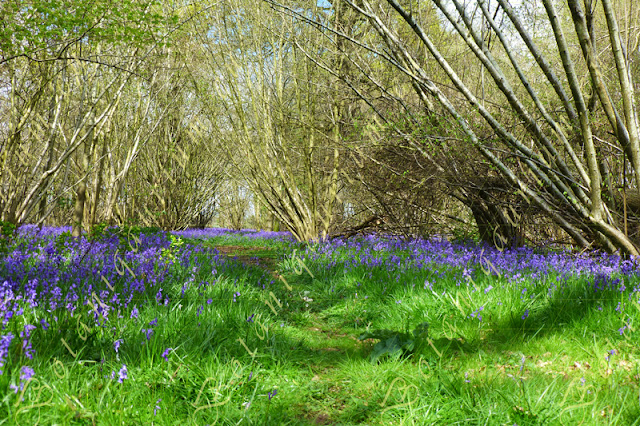 |
| English woodland in early May. |
 |
| Flower upside down showing creamy white anthers. |
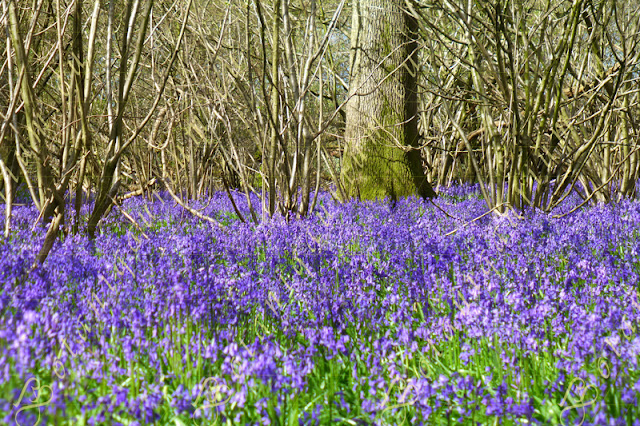 |
| Before hazel, oak and beech leaf up, it is prime time for countless bluebell - a stunning sight. |
Have a look at Related Species

